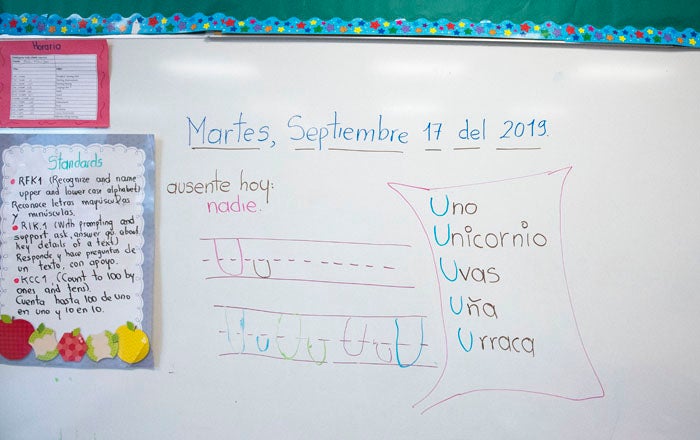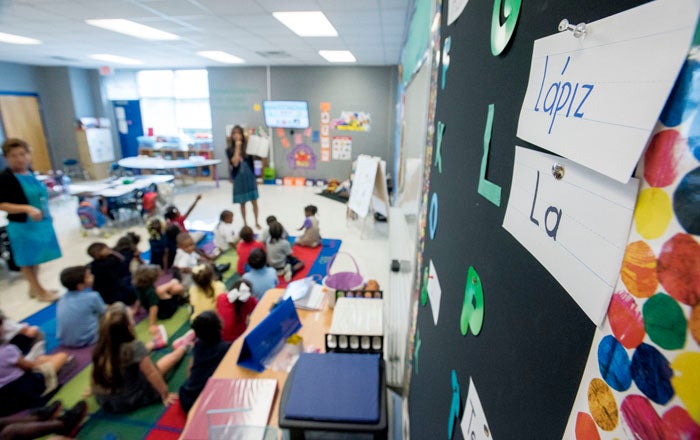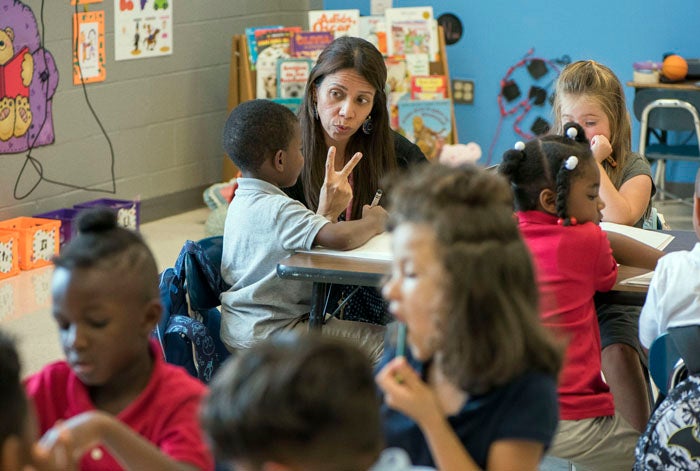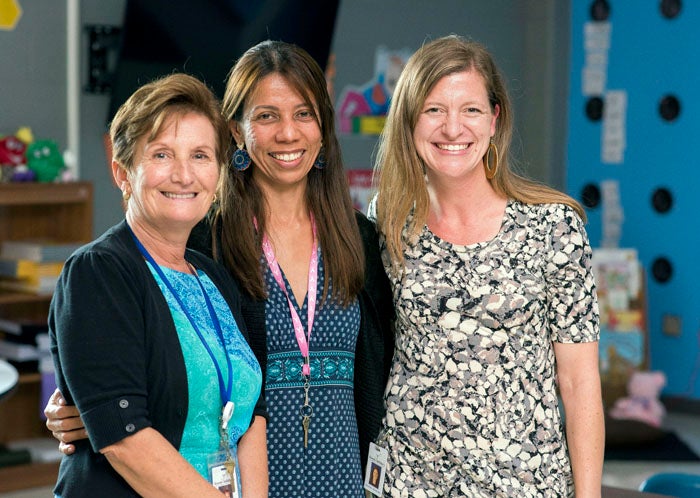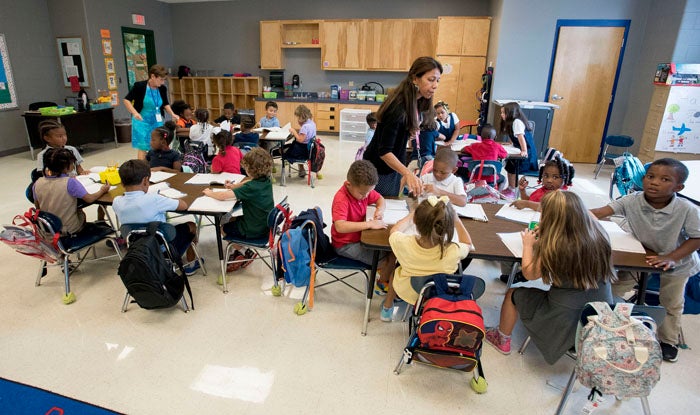Isenberg dual-language program molding ‘global citizens’
Published 12:00 am Thursday, September 19, 2019
By Maggie Blackwell
For the Salisbury Post
SALISBURY — “Hola, hola,” the little voices sing. “Yo te digo hola; yo estoy bien! Y espero que tu tambien.”
“Hello, hello, I say hello to you. I am doing well! I hope you are, too.”
Kindergartners at Isenberg Elementary School are participating in the only dual-language immersion program in Rowan County.
One day, they head to Sandra Yepes’ (pronounced, “JEH-peas”) room with all instruction given in Spanish; the next day, they head to Heather Nardone’s class for a day of instruction in English.
There are two classes of kindergartners in the program, so on any given day one class is in the English-speaking room and the other class is in the Spanish-speaking one. The next day, they switch places.
The dual-language immersion classroom is a part of a larger effort by Isenberg to create “global citizens.” Principal Marvin Moore explains what that means.
“We must teach our children global empathy, and we are telling our kids the world is much bigger than Rowan County,” Moore said. “A lot of what we do here affects only us. When Dorian hit the Bahamas, it didn’t affect us; but if we have someone from the Bahamas who can tell the impact on their family, the students can understand.
“A quarter of our staff are global teachers, and two have the national global badge. That equals 40 hours of global professional development for three years. We all know what statistics say about global citizens. People who have dual citizenship have double the earning potential of others.”
He said the school has multiple global days this year. Every grade represents a different continent, and all students have “passports” that they get stamped to “visit” the parts of the world represented in the school and learn about other cultures. During December, they’ll learn about holiday customs around the world.
Back in the classrooms, Yepes and Nardone are working closely together to be sure their classrooms mirror each other in instruction, albeit in different languages. They plan week by week to ensure cohesive lessons for the students.
Moore told them at the first of the year to focus on procedures. Because most kindergartners are unaccustomed to attending school all day, focusing on procedures helped the students understand a rhythm to the day and come to understand what to expect day to day.
Yepes came to Isenberg from Colombia via Participate, a consulting firm that helps schools develop global programs, particularly dual-language programs.
“Participate gives me information on how to teach in a general way. We plan together on topics, say, classifying shapes and colors, then recognizing letters and sounds — then to words — then sentences.”
The data on dual-language programs is impressive. They are offered in 39 states, according to Participate. Neuroscience research shows that brain density and cognitive skills increase when studying a second language, and it protects against Alzheimer’s and other cognitive impairments. All this adds up to a better working memory, increased attention span and better problem-solving skills.
Yepes has 24 years of experience teaching; Nardone has 18. Moore says he’s happy to have two moms teaching in the program.
“It’s different when you have moms working with kids,” he says. “I’m a much better educator now that I have kids. People who have life experiences can be much more understanding.”
Students are finding their way. Nardone reports that they spontaneously speak Spanish in her English-speaking class, saying such things as, “Me gusta” (I like) and “yo veo” (I see). She is pleased to see them coming along with their Spanish.
“I can say kids are amazing,” Yepes says. “Sometimes we underestimate them. Initially they were confused about which class to go to, but now they just go there. They know now they have to speak Spanish here, and English there.”
Nardone agrees. “If you think about, everything is new to them. It helps me realize every word is an unknown word. So in Spanish, it’s just the same thing.
Of course, teachers are accustomed to having the same students all five days of the school week.
“I’m working to have meaningful activities and meaningful topics, because we have them only 50% of the time,” Nardone says. “I may do three activities for ‘s-e-e is see,’ rather then five.”
“The students love working together. They whisper across the hall, ‘Ola, amigo’ (Hi, friend), and I allow that even though we are supposed to be quiet in the halls.”
Yepes can’t express enough what a great team she has to help. Working together with Nardone, she says, has been wonderful.
Yepes’ aide, Zinca Sukurica, is originally from Bosnia and now a U.S. citizen. She speaks four languages and is learning Spanish to support the students.
Because the dual-language immersion program was a choice for parents, Nardone says the parents are supportive, often asking, “How can we help?”
The school plans a parent night in November, when the students have all the routines down pat and have absorbed some Spanish.
“We want to give the program enough time to succeed,” Moore says. “Plant the seed, water it, give it plenty of sunshine, then let the people in. Once it sprouts, we can let the people in.”


